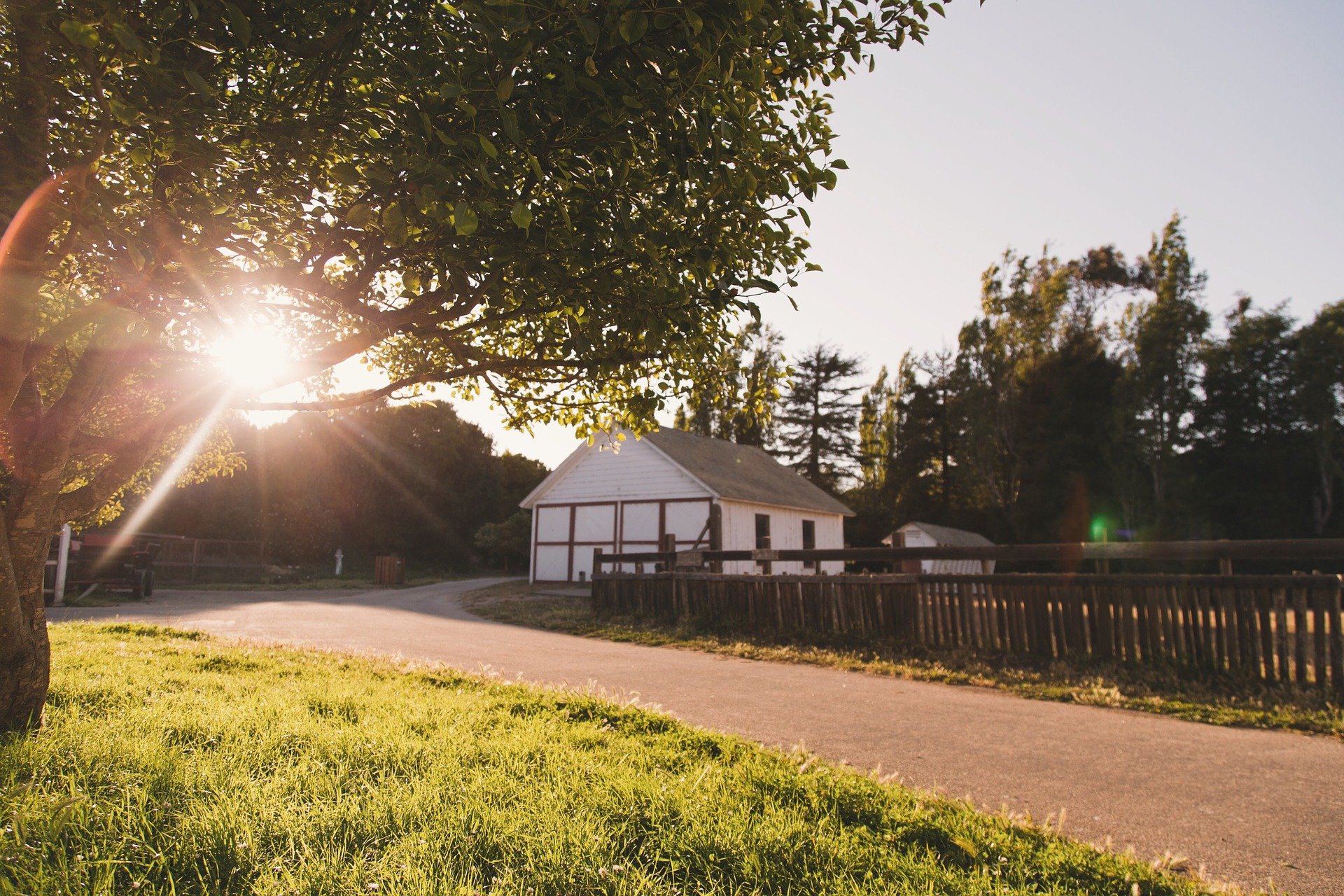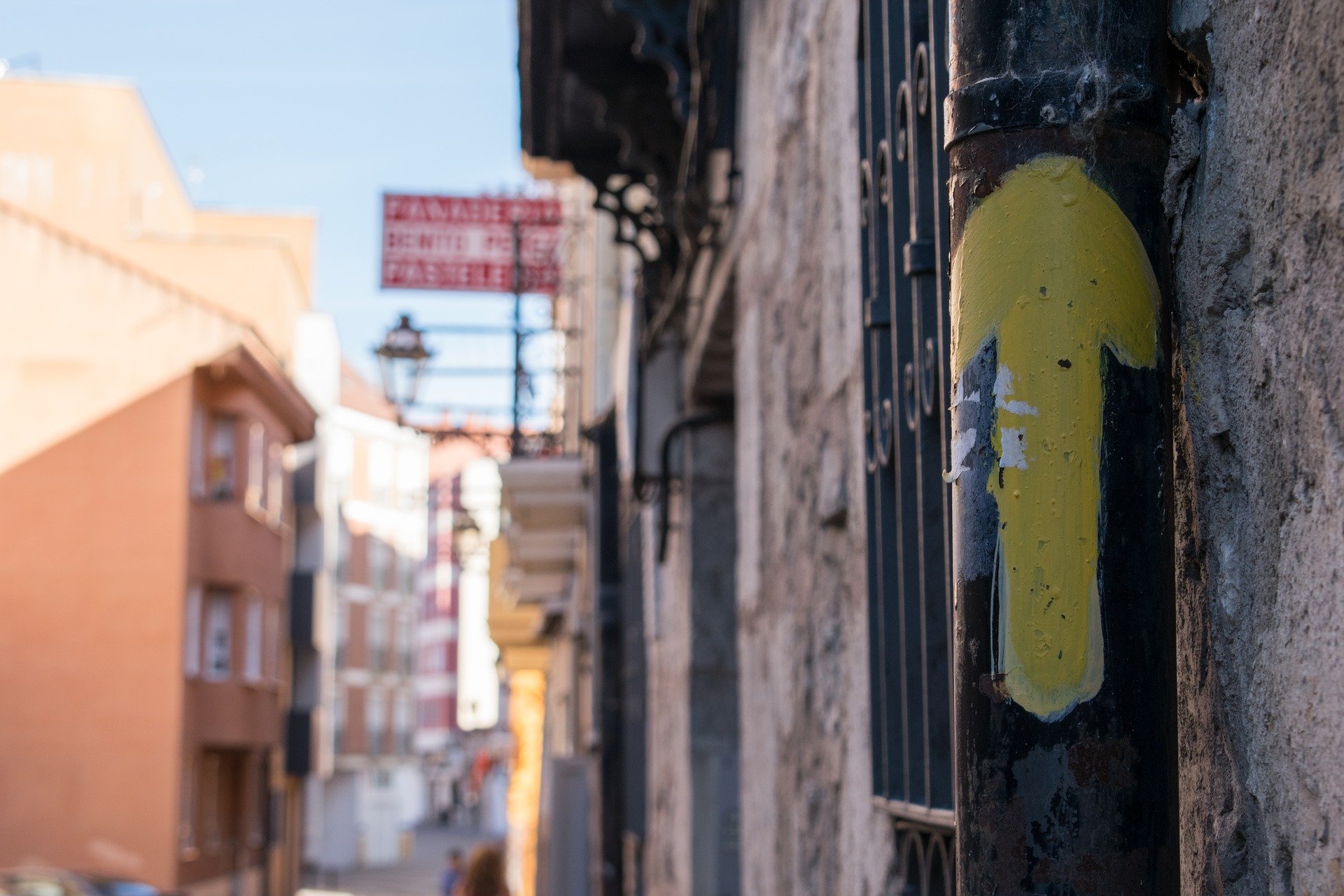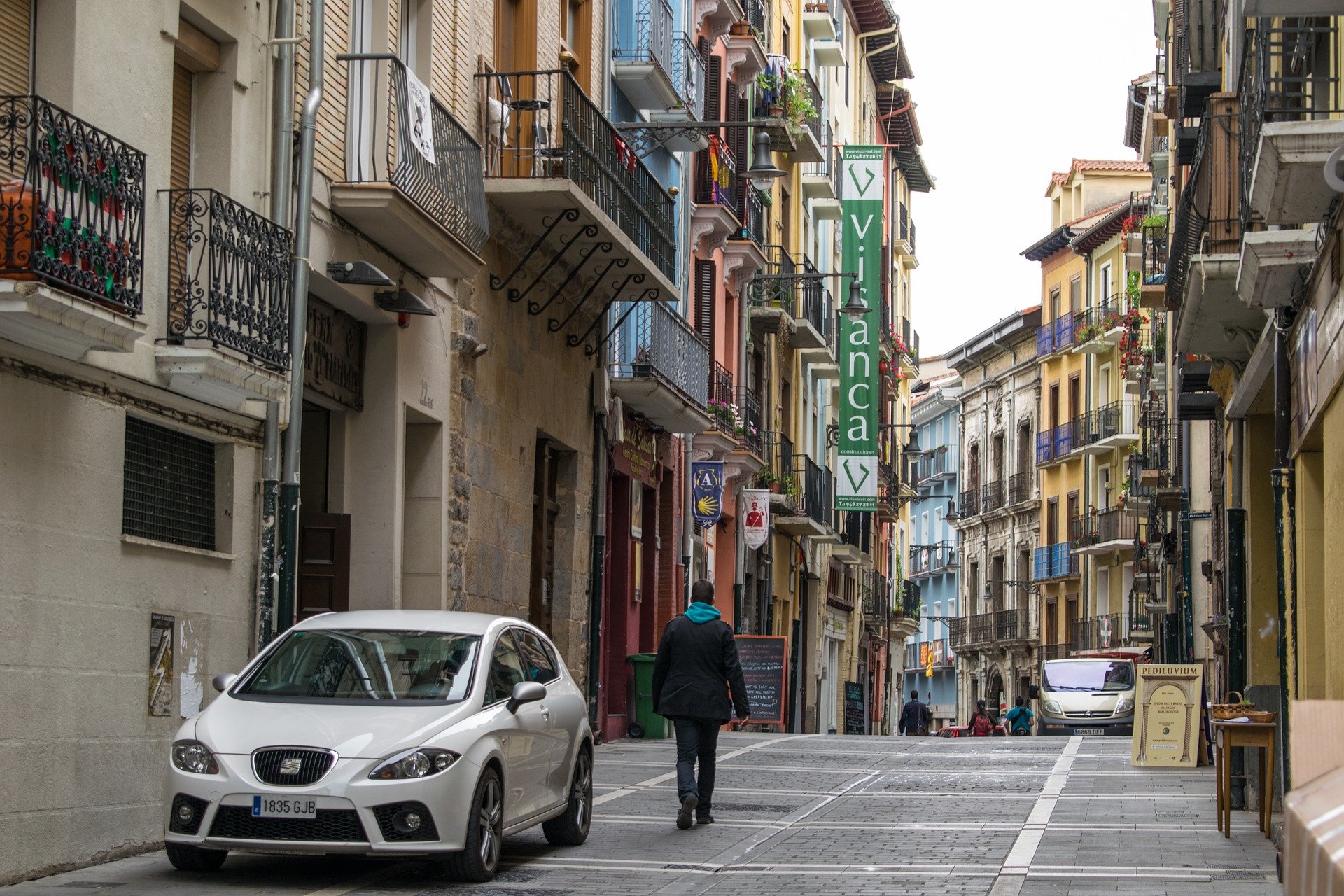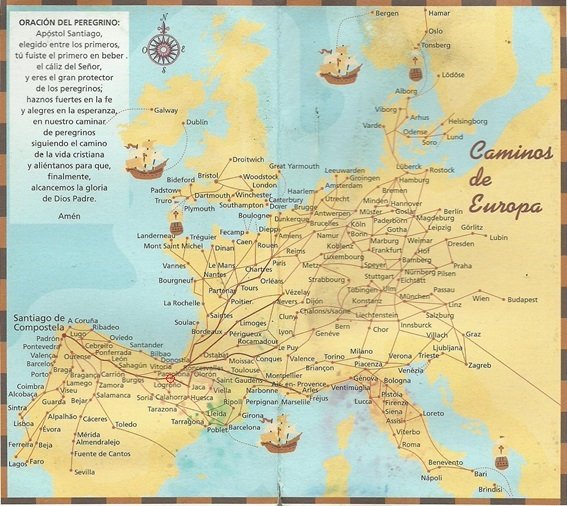Just dropped in? You can join me at the start of the Camino HERE
Day 4. Zubiri-Pamplona [Part 1/2]
After a good night's sleep at Zaldiko Albergue in Zubiri, and a beautiful dream, the kind that leaves us in an outstanding mood, that’s how I went about the Way, that morning. As always, I started very early, the sun coming up behind the mountains reminded me of Bob Marley’s Soul Rebel: "see the morning sun, on the hill side ..." which eventually turned into a ear worm (by the way there is now a scientific name for that - Involuntary Musical Imagery (INMI) - for the academic fellows!) which I went humming for most of the path.

Sunrise
I stopped to rest in Ilarratz, laid my backpack of the floor, leaned my staff against a small stone wall and left the huge book (War and Peace), which I now carried in my hand to mitigate some of the exceptional weight of the backpack, on the top of that same wall, while I enjoyed that beautiful morning. The sun was smiling at me from over the rooftops of the village. A cat wandered quietly around my legs and I was amazed by the confidence with which he approached me. I lowered myself to pet him, but he fled before I could touch him. Looking towards the luminous sunrise one last time, I resumed walking, beginning a long descent followed by an equally long climb, where someone wrote with a black marker and capital letter, “GO BABY GO GO GO" in a trash container on the side of the road. Funny, given the steepness of the climb. Half a mile ahead, having gone through half the village of Esteribar, I felt that something was not right, something that had been poking at my mind like an invisible thorn, but I couldn’t put my finger precisely on what it was...
Suddenly: "Oh, no! The book...! I left him in Ilarratz... You IDIOT!", awed by the natural beauty I had forgotten the book when I stopped to rest.
I left the backpack in the middle of the village and turned back as fast as I could. In Ilarratz, there he was on the small wall where I had left it. From the cat, the culprit of my distraction, there was no sign. Back again, half running and half walking and going through the words "GO BABY GO GO GO" one last time, I got back to where I left.
A few hours ahead, I realized that somewhere along the way, when taking an handkerchief from my pocket, I had lost a glove. I didn’t even thought about it twice, I wasn’t going back 2 hours for a glove, so I considered it lost. Luckily, when Lenny found me on the road which made entrance into Larrasoaña (I had mistakenly entered the village, the path was straight ahead through the mountain), he returned it to me having seen it laying in the middle of the road. A little later, I came to lose it in the exact same way and once more he found me on the bridge to Zuriain, further ahead and gave it back one more time, shaking his head in hilarious disbelief.
"Eheh! Glad I’m walking behind you, so I can collect your things..."
"Yes, thank goodness! ", I admitted.
It was almost lunch time so he, Natalia and Misha sat with me and offered me a cheese, tomato and pimiento sandwich (a Camino de Santiago specialty!), which they were also preparing for them. We discussed the fact that there wasn’t absolutely nobody on the street... Never! Probably from the cold, we concluded. I said, goofing with the typical Spanish stereotype, that everyone was probably at home watching soap operas. Natalia built on my thoughts and added that every village there was invented purely for the joy of pilgrims who passed through, no one actually lived in those houses. We laughed at the conspiracy. Then, in the house in front of us, a chicken began a dispute with a dog which, surprised by the quarrelsome nature of the chicken, put its tail between its legs and ran away. We laughed more.

Arrow
I decided to follow the advice of one of the arrows of the Way and make a detour to Zabaldika to visit the Church there. An elderly man passed me by, coming downhill, and wished me a "Buen Camino" with a smile, to which I thanked him. People enjoyed seeing pilgrims. Inside the church, I left a message, written in a post-it paper offered by Marisol, the curator of the church, on the statue of Jesus Christ, which had a wall all around already filled with messages and/or wishes that pilgrims had left there before me. Then I took a dusty path through the mountains that Marisol pointed to me. The road all the way to Pamplona was still quite long, following the many curves of the face of the mountain, but luckily the albergue was just at the entrance to the city, past the old arch bridge branded with the distinctive yellow arrow painted on the aged gray stone. Paderborn House was the name. I entered and was greeted warmly by the two friendly old ladies that managed the place. Before entering the lounge, I was asked to leave my dirt covered boots in the hall. I sat on a wooden stool, got barefoot and felt the immediate relief from the 20 kilometers done in those boots. Then I went to the room where a cup of hot tea and cookies were waiting for me. One of the old ladies stamped my pilgrim's credential according to that particular Albergue and showed me to my bed. I rested for a bit, while marked my route on the map of Spain that I carried along and, free from the weight of the backpack, I went to meet Pamplona and buy my dinner.

Pamplona
I very much liked the old part of town, adorned by the bullring and a statue in homage to Hemingway, erected in 1968 in honor of the writer who came to the town to participate in the famous festival of San Fermín, where the bulls are set loose in the city. This contextual frame was the inspiration for his book "The Sun Also Rises” (Fiesta). My feeling was that years and years of party had left a remnant of its happening in the city streets as the sweet scent of a flower remains in a room, even long after the flower is gone. The city combines tradition and a variety of live colors in a subtle way, all throughout its streets and its numerous bars successfully bridging the ancient and the modern in a beautiful way, which is sophisticated but not overly flamboyant. The old city as a solid backdrop, a cornerstone, for a future to be built upon.
<---
Day 3. (Part 2/2)
--->
Day 4. (Part 2/2)
Index
Day 1. Saint Jean Pied-de-Port - Orbaitzeta
Day 2. Orbaitzeta - Roncesvalles
Day 3. Roncesvalles - Zubiri
Day 4. Zubiri - Pamplona (YOU ARE HERE)
Day 5. Pamplona – Puente de la Reina
Day 6. Puente de la Reina - Estella
Day 7. Estella – Torres del Rio
Day 8. Estella - Logroño
Day 9. Logroño - Najera
Day 10. Najera - Grañon
Day 11. Grañon - Belorado
Day 12. Belorado - Atapuerca
Day 13. Atapuerca - Burgos
Day 14. Burgos – Castrojeriz
Day 15. Castrojeriz - Fromista
Day 16. Fromista – Carrión de los Condes
Day 17. Carrion de los Condes - Sahágun
Day 18. Sahágun – Mansilla de las Mulas
Day 19. Mansilla de las Mulas - León
Day 20. Léon – Hospital de Órbigo
Day 21. Hospital de Órbigo – Rabanal del Camino
Day 22. Rabanal del Camino - Ponferrada
Day 23. Ponferrada – Vega de Valcarce
Day 24. Vega de Valcarce - Tricastela
Day 25. Tricastela - Ferreros
Day 26. Ferreros – Palas del Rei
Day 27. Palas del Rei - Àrzua
Day 28. Àrzua - Santiago

Disclaimer. I did not carry a camera with me, but I will do my best to illustrate these texts with free for use images found around the web and later sent to me by my fellow pilgrims. All images that are not mine will be attributed to their rightful owner at the end of the post, even if no attribution is required. When no attribution is stated, the image is from my notebook.
Thanks to the following authors for kindly providing the CCO License Free To Use photography that illustrates this post:
Sunrise - StockSnap (Pixabay)
https://pixabay.com/en/users/StockSnap-894430/
Arrow and Pamplona - larahcv (Pixabay)
https://pixabay.com/en/users/larahcv-5320615/
